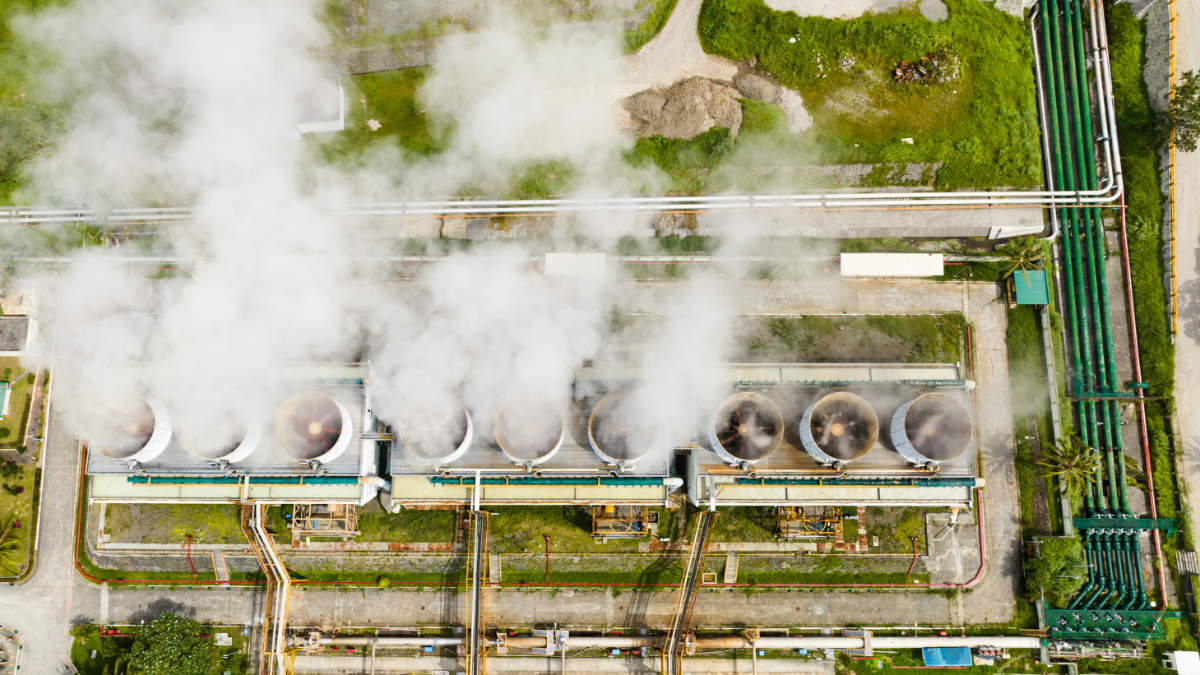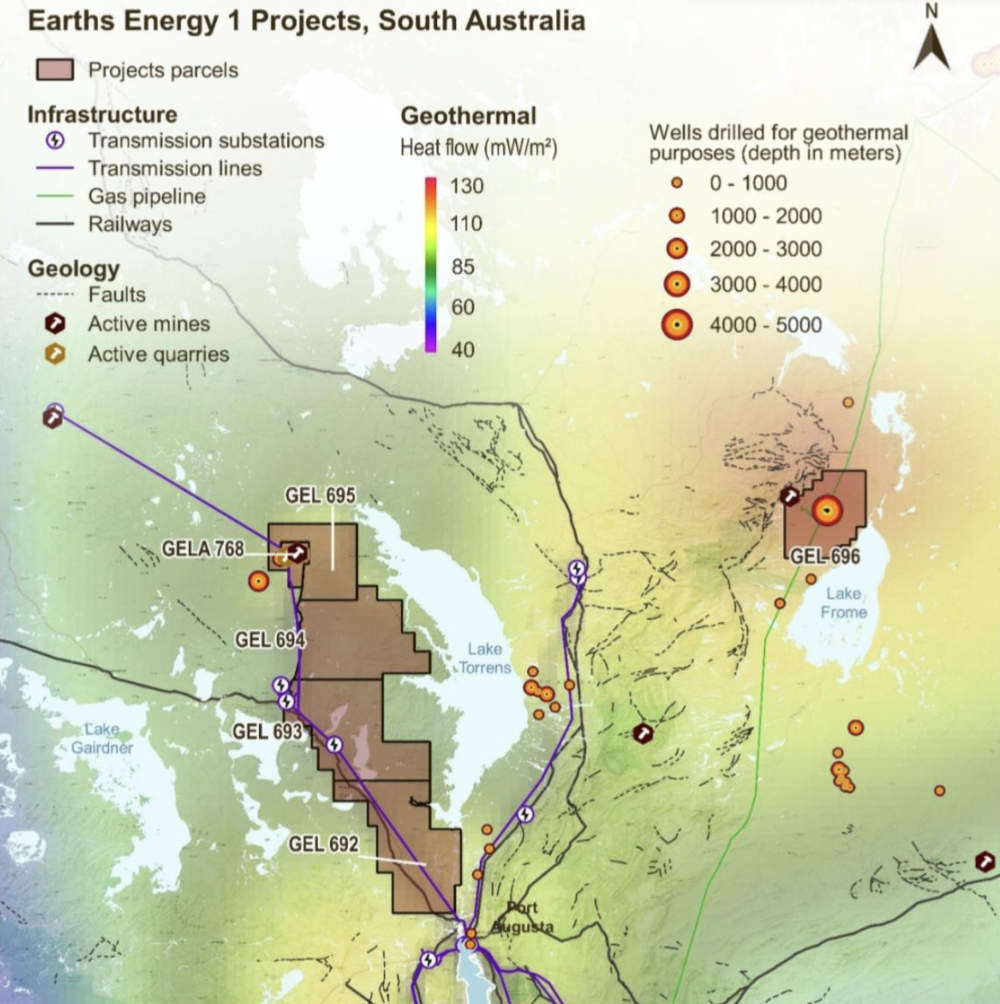Earths Energy’s South Australian geothermal projects have the right stuff

Earths Energy’s review has found that its South Australian geothermal projects could have global development potential. Pic: Getty Images
- Earths Energy’s South Australian geothermal projects assessed to be commercially viable
- Projects could be candidates for the use of enhanced and advanced geothermal systems used in the US
- Paralana project found to be a prime development candidate
Special Report: Earths Energy is poised to progress its advanced South Australian geothermal energy projects after a review confirmed they have significant development potential.
Geothermal energy is arguably the crème de la crème of renewable energy. Not only is it capable of generating clean, zero-emissions energy like wind and solar, it is capable of doing so 24/7. That means a geothermal source can produce renewable baseload energy.
It is also capable of doing so at small scale without the exorbitant costs involved with hydropower – the only other source of renewable baseload energy – while retaining the ability to ramp up to meet grid demands.
This makes geothermal invaluable in the push for net zero emissions as it can back up the grid during peak periods, which typically coincide with when solar power is at its lowest.
As an example of just how much power is available, the annual geothermal power production of the US comes up to about 17.2 terawatt hours, which would meet all of Western Australia’s annual electricity needs. The output of the US, Indonesia and Philippines combined will meet over 17.7% of Australia’s overall demand.
The only drawback is that you need the right geology, typically hot springs in geologically active – often volcanic – regions to make it work. These are in short supply in Australia.
Underground hot rocks are another viable option, though these tend to be fairly deep in Australia, a fact that has proved the undoing of earlier geothermal players such as Petratherm and Hot Rock.
Commercially viable
With this combination of potential value and sad history, it is undoubtedly heartening for Earths Energy (ASX:EE1) to receive validation that its projects are not only significant by Australian standards but also have global development potential.
This follows a review of its South Australian projects that was conducted internally and by its external advisors JRG Energy.
EE1 noted that recent work by US groups in Nevada have shown its South Australian projects – Paralana and Flinders West – maintain significant development potential by incorporating recent development in both enhanced geothermal systems (EGS) and advanced geothermal systems (AGS).
Based on a relatively conservative group of analogous operating projects in the US, the company could begin assessing the feasibility of between 40 and 80 megawatt electric (Mwe) installed capacity at multiple sites within the State.
Work has also indicated the potential for a carbon capture and storage project on its acreage, which is a positive given that South Australia is one of the few jurisdictions in Australia with legislation in place to progress such developments.
The company adds that strategic opportunities have been identified from its coverage of the power grid between Port Augusta and Olympic Dam.
“This recent work completed by EE1 and JRG confirms that the company holds some of Australia’s most advanced geothermal projects,” EE1 CEO Josh Puckridge said.
“The work completed at Paralana makes it a prime development candidate and beneficiary of the innovations made in US EGS projects.”

South Australian projects
EE1’s South Australian projects cover ~12,035km2 with multiple ‘sweet spots’ identified for exploration.
Paralana is 300km northeast of Port Augusta and has been drilled to a depth of 3,685m where bottom hole temperatures of 171 degrees Celsius were measured.
It also demonstrated a significantly higher temperature gradient of 46C per km of depth, ~1.84x the Australian average.
This makes it ideal for new EGS engineering and methods from the US.
The project has been assessed to have the potential to produce between 97 and 233 gigawatt hours of power per annum based on conservative conventional analogous projects in the US.
Meanwhile, Flinders West – about 45km northwest of Port Augusta – was drilled to a depth of 1,934m with bottom hole temperatures of 85C along with a high gradient of 43C per km.
The upper range of power density has been independently estimated at 7MWe/km2, which is enough for commercial power generation.
It also benefits from grid access and CCS potential.
Next steps
EE1 will now carry out modelling work to support a new EGS power generation project at Paralana.
It will also refine the project’s power density modelling and likely energy production compared to US analogues using more modern engineering.
The company will then assess the feasibility of further drilling at Paralana 2 in the context of further developing its potential EGS development.
At Flinders West, the company will identify and appoint an appropriate subsurface team for CCS and geothermal development.
It will also progress assessment and discussions regarding grid access and grid services along the Flinders West corridor while continuing the techno-economic assessment of new technologies and engineering such as next generation geothermal power production.
This article was developed in collaboration with Earths Energy, a Stockhead advertiser at the time of publishing.
This article does not constitute financial product advice. You should consider obtaining independent advice before making any financial decisions.
Related Topics
UNLOCK INSIGHTS
Discover the untold stories of emerging ASX stocks.
Daily news and expert analysis, it's free to subscribe.
By proceeding, you confirm you understand that we handle personal information in accordance with our Privacy Policy.








